|
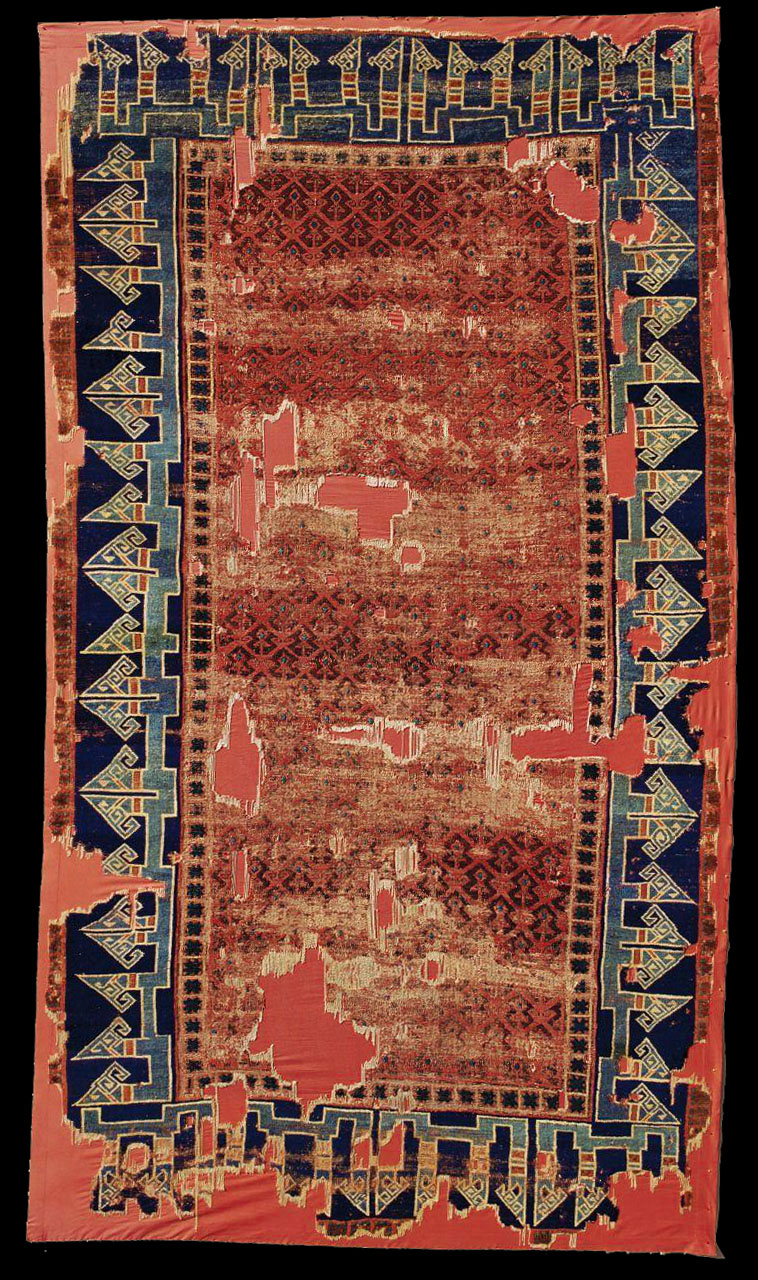
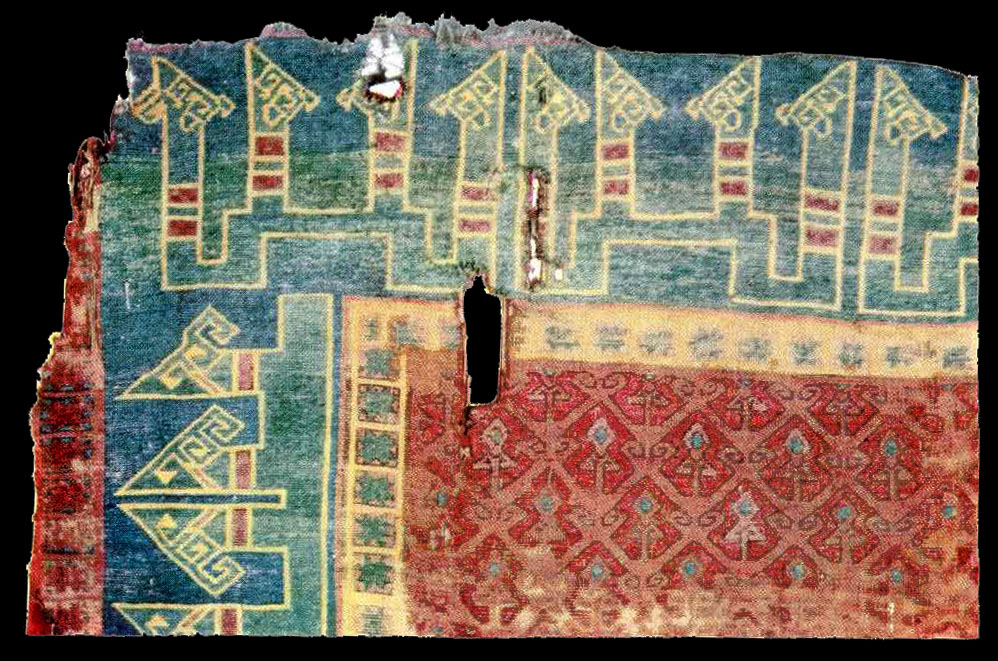
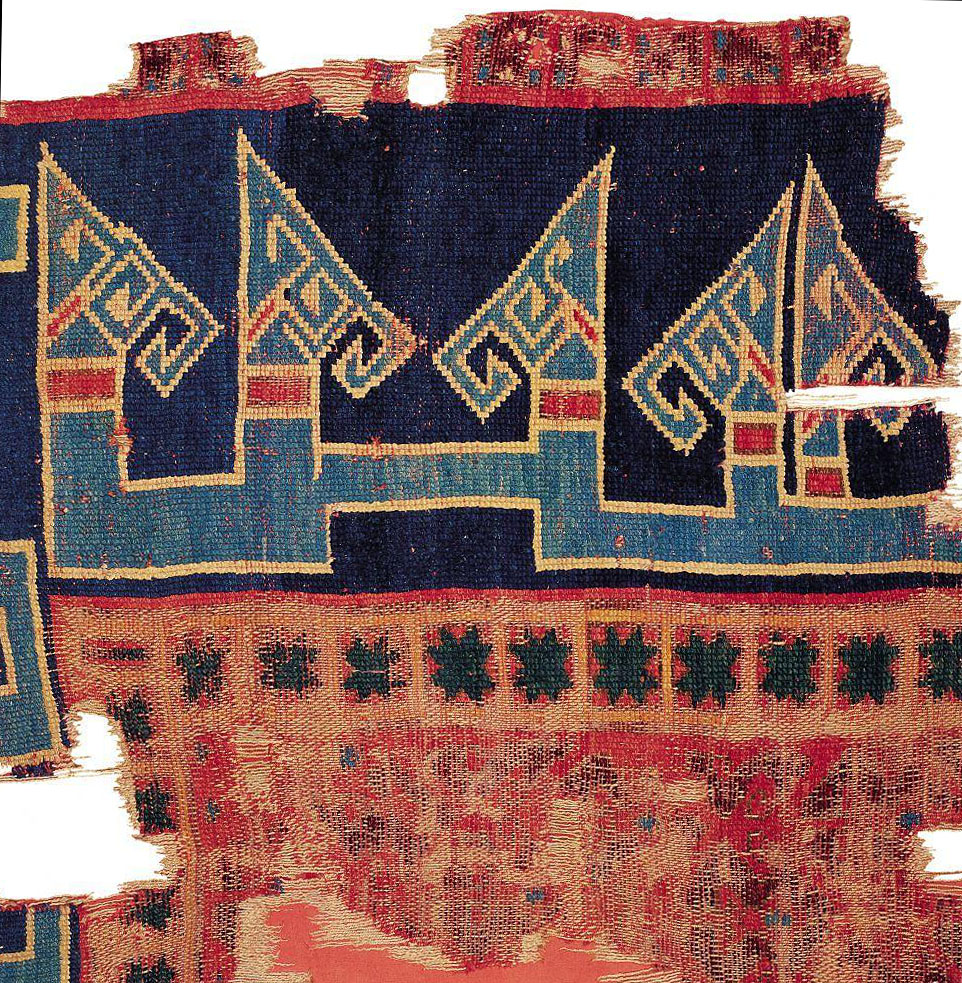
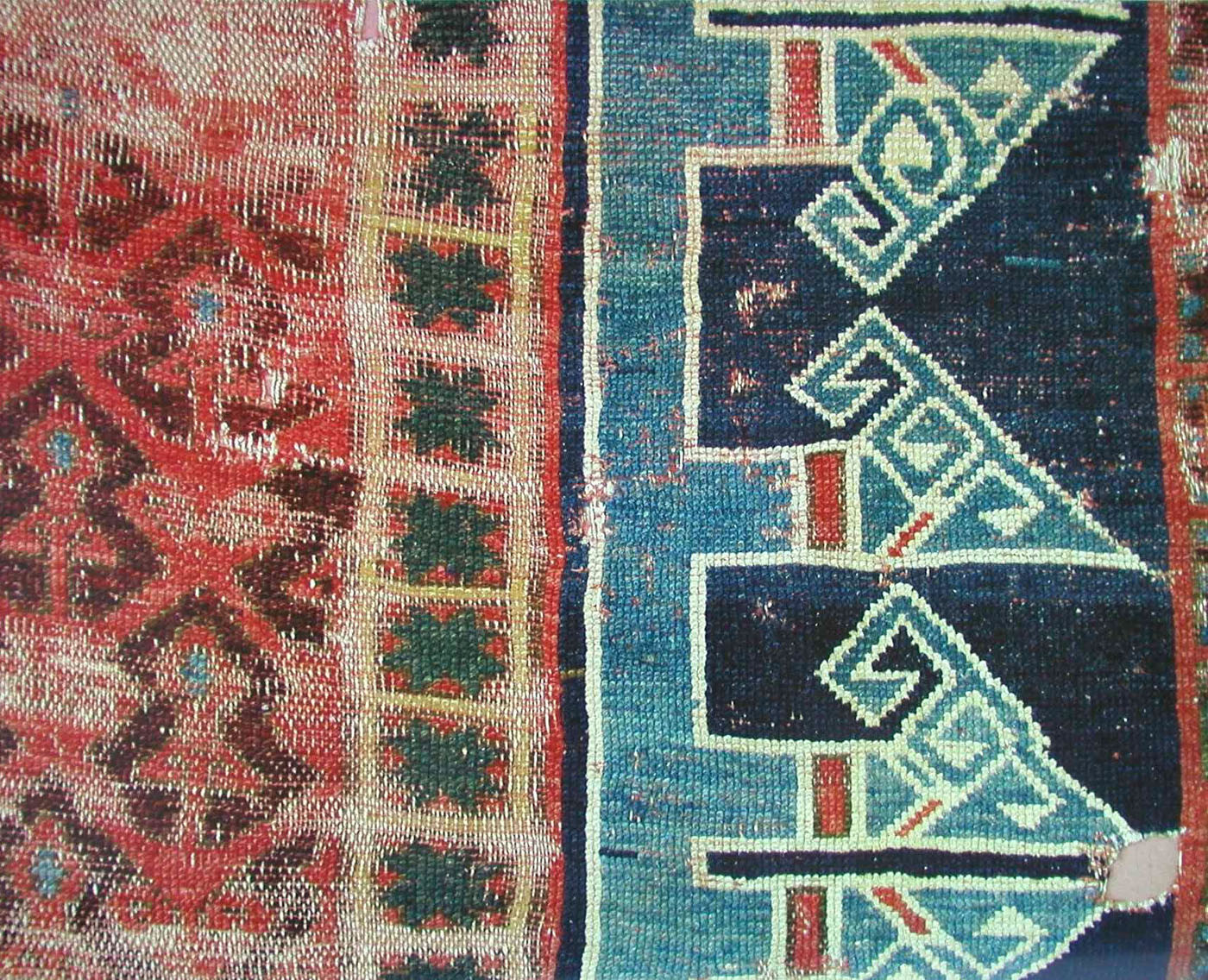
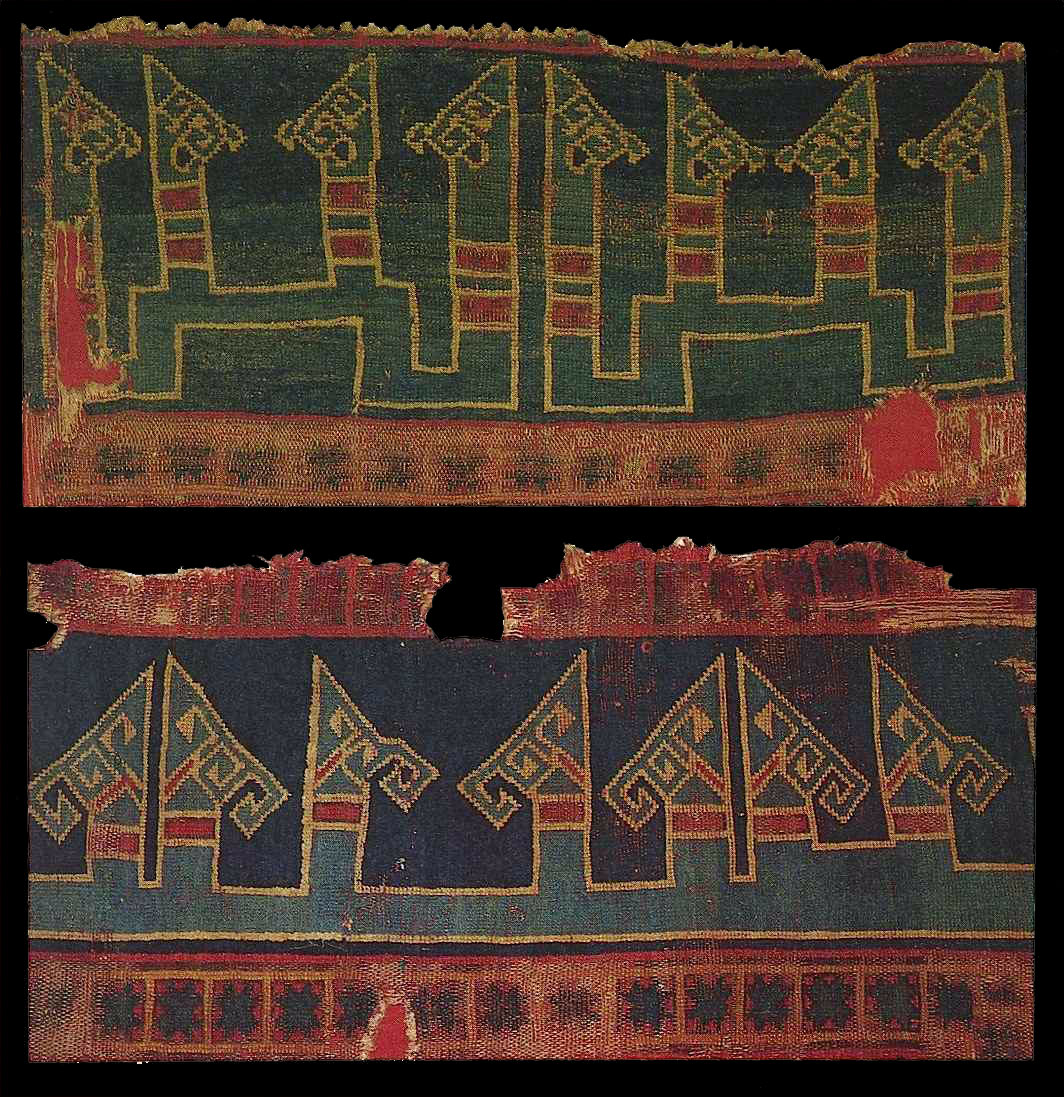
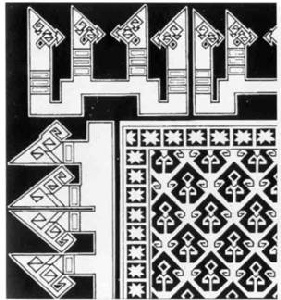
Material(s) / Technique(s): Wool on
wool, woven with the Turkish double knot also known as the Gördes knot.
Date of the object: Hegira 7th century
/ AD 13th century
Period / Dynasty: Anatolian Seljuq
Provenance: Konya, Turkey.
Description: This is an outstanding
example of a 'Konya rug', considered one of the earliest Turkish rug
groups in Anatolia. Both warp and weft are wool. The weaving technique
used is the 'Turkish double knot', known as the Gördes knot. The colours
are red, dark-blue, blue, and beige. The main field of the rug has a
geometric pattern with hooked red motifs on a light-red background.
Triangles, octagons, hands-on-hip, and hook motifs form a repetitive
geometric composition characteristic of Seljuq rugs. The decorative
composition is dominated by the principle of 'infinity', as is typical
with Turkish rugs. The design is repeated continuously. Between the
repeating motifs are blue dots, which provide a strong contrast to the red
background.
The field of the rug is surrounded by a narrow border of eight-pointed,
dark-blue star motifs separated from each other by yellow-beige lines. The
most striking feature of the rug is the wide border decorated with pseudo-kufic
script. Bold, stylised, kufic letters in light-blue follow one another on
a dark-blue background. The letters are divided by red bands outlined in
beige. Such monumental kufic-script borders are characteristic of Seljuq
rugs.
The decorative composition of the rug is completed by a narrow outer
border decorated with red eight-pointed star motifs on a blue background.
The rug is quite worn; much of the pile is gone. Areas of the outer border
are missing, and there is a large tear in the middle.
Seljuq rugs commonly were woven in large dimensions and decorated with
plain geometric compositions consisting of a small number of colours in
various shades contrasting with a wide kufic border.
Found in the Alaaddin ('Ala' al-Din) Mosque in Konya, this is one of eight
Seljuq rugs brought to the Museum and registered in the inventory on 30
Rabi' al-Awwal 1329 / 31 March 1911.
How object was obtained: Eight rugs were spotted by the scholar, Marin
in the Alaaddin ('Ala' al-Din) Mosque in Konya in 1322 / 1905 and the
information was brought to the attention of Loydved, the German Consulate.
The rugs were first published in 1325 / 1908 and were registered in the
Museum in 1329 / 1911.
How date and origin were established: The
Seljuq sultans had many mosques built and it is known that they endowed
Qur'ans, candlesticks, Qur'an-stands and rugs to furnish them. This rug is
believed to have been woven specially for the Alaaddin Mosque by order of
the Seljuq Sultan Alaaddin (Ala' al-Din) Keykubad I (r. 61635 / 122037),
who had the mosque enlarged in 618 / 1221. Stylistic analysis also dates
the rug to the 7th / 13th century.
How provenance was established: Most
high-quality rugs produced under the Anatolian Seljuqs come from Konya;
the colours used in this rug are predominant in Konya rugs.
Selected bibliography: Erdmann, K.,
Seven Hundred Years of Oriental Rugs, London, 1970, p.42.
Erdmann, K., Der Türkische Teppich des 15.Jahrhundert, Istanbul, 1958.
ölçer, N., et al, Museum of Turkish and Islamic Art, Istanbul, 2002,
p.145.
ölçer, N., et al., Turkish Carpets from the 13th18th Centuries, Istanbul
1996, pp.45.
önder, M., Selçuklu Devri Konya Halıları (Konya Rugs of the Seljuq
Period) Türk Etnoğrafya Dergisi 78 (19645), pp.4650.
Roxburgh, D. J. (ed), Turks: A Journey of a Thousand Years, 6001600,
London, 2005, p.402.
Citation of this web page:
Gönül Tekeli "Rug" in Discover Islamic Art. Place: Museum With No
Frontiers, 2014. http://www.discoverislamicart.org/database_item.php?id=object;ISL;tr;Mus01;11;en
Prepared by: Gönül Tekeli
Translation by: Barry Wood, İnci Türkoğlu
Translation copyedited by: Mandi Gomez
MWNF Working Number: TR 20 |






